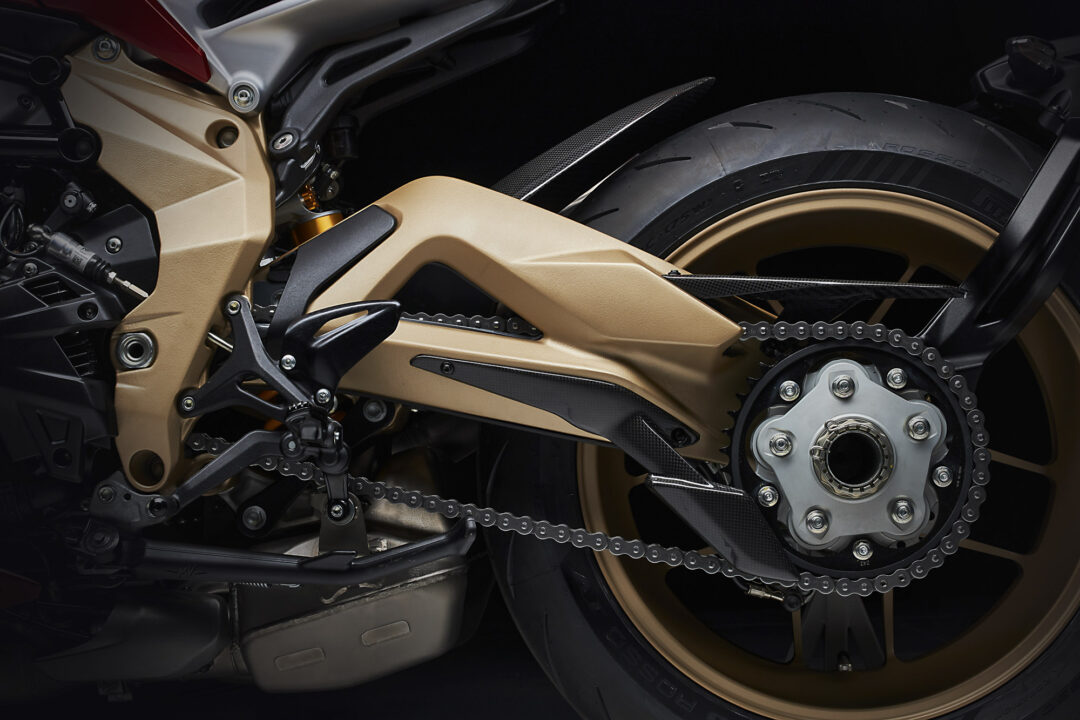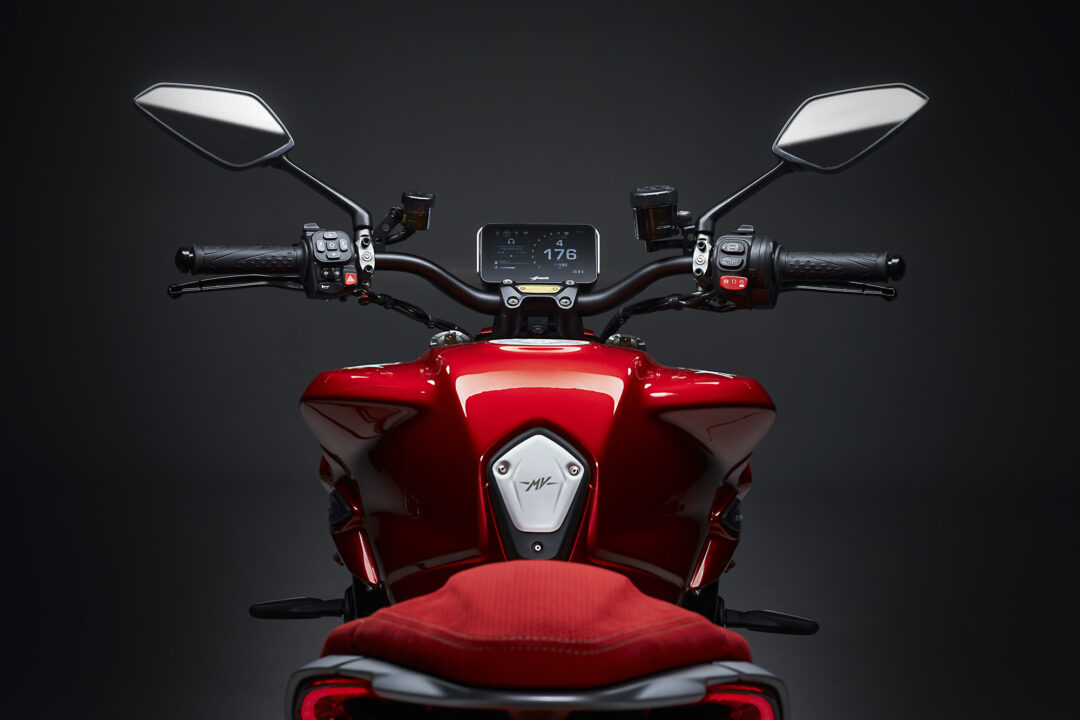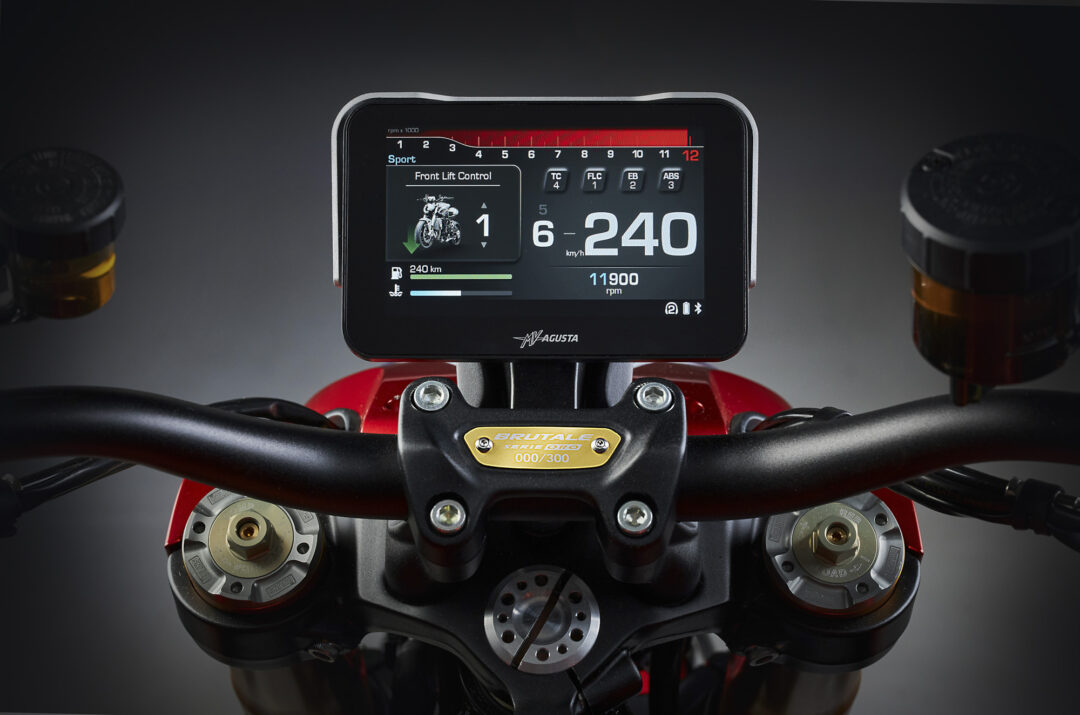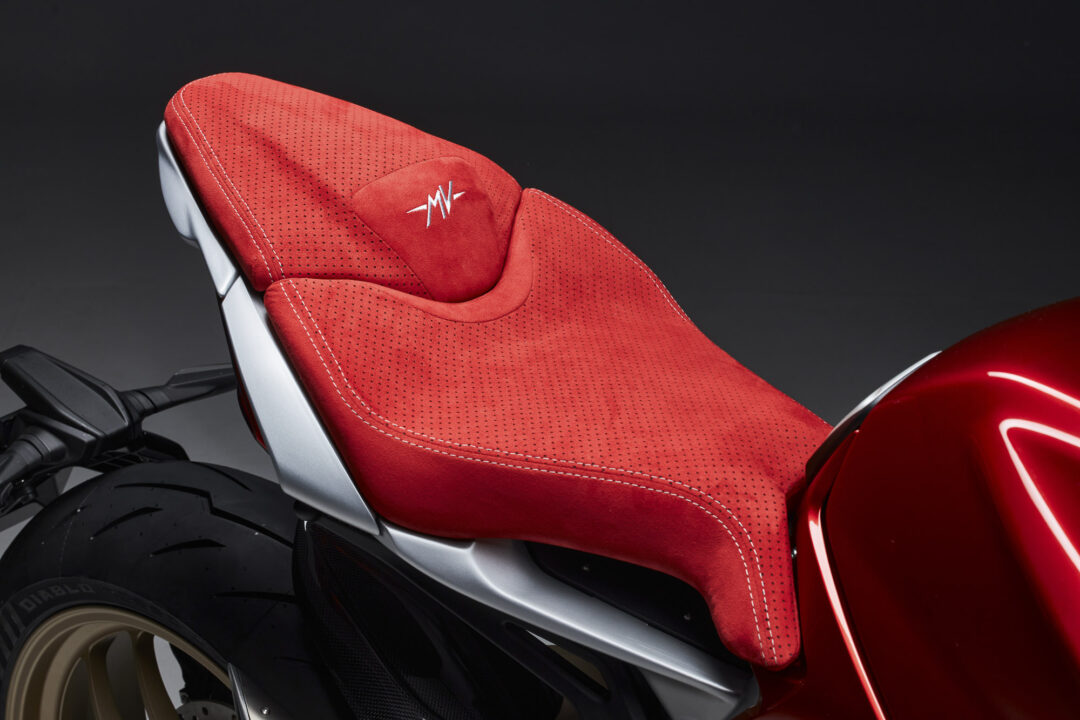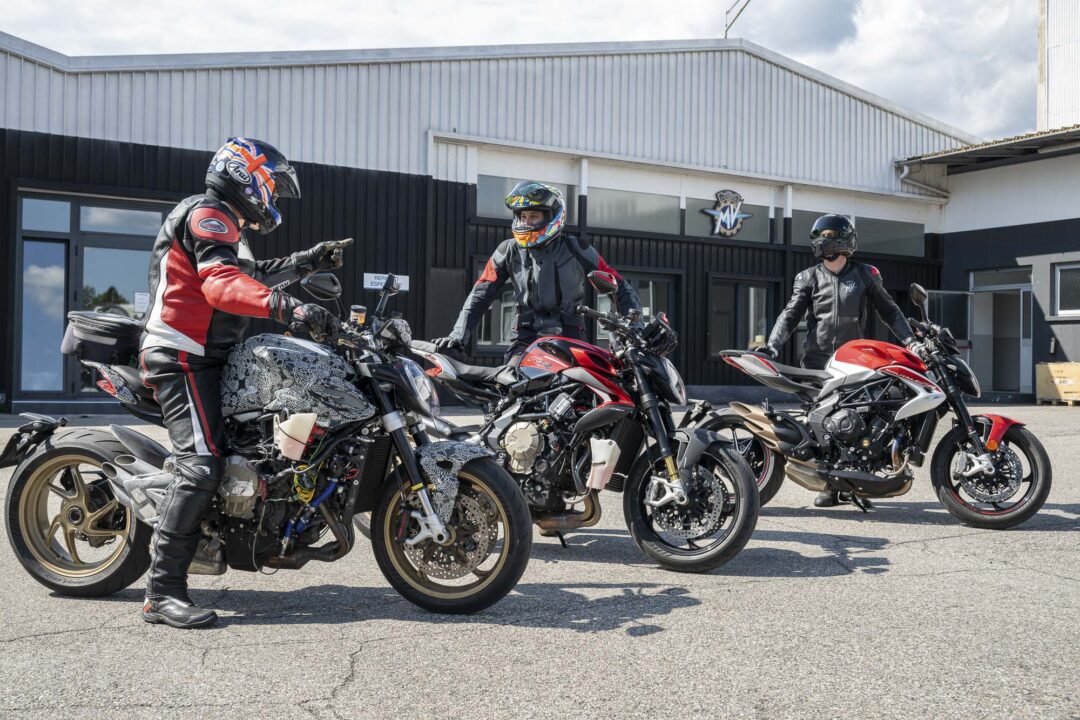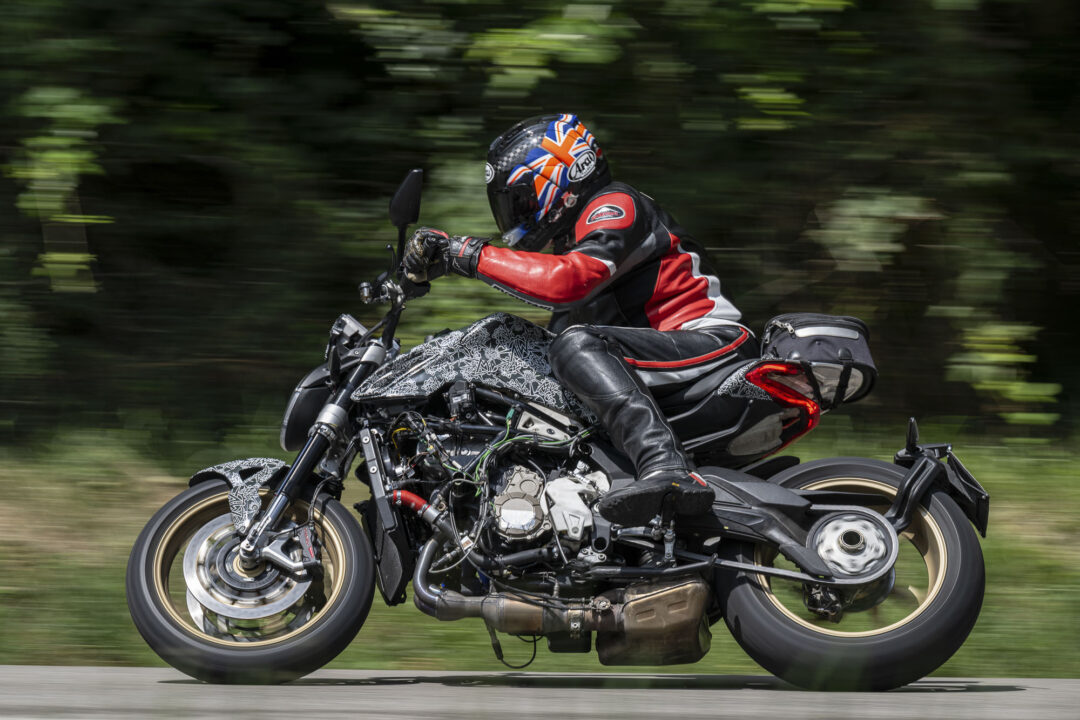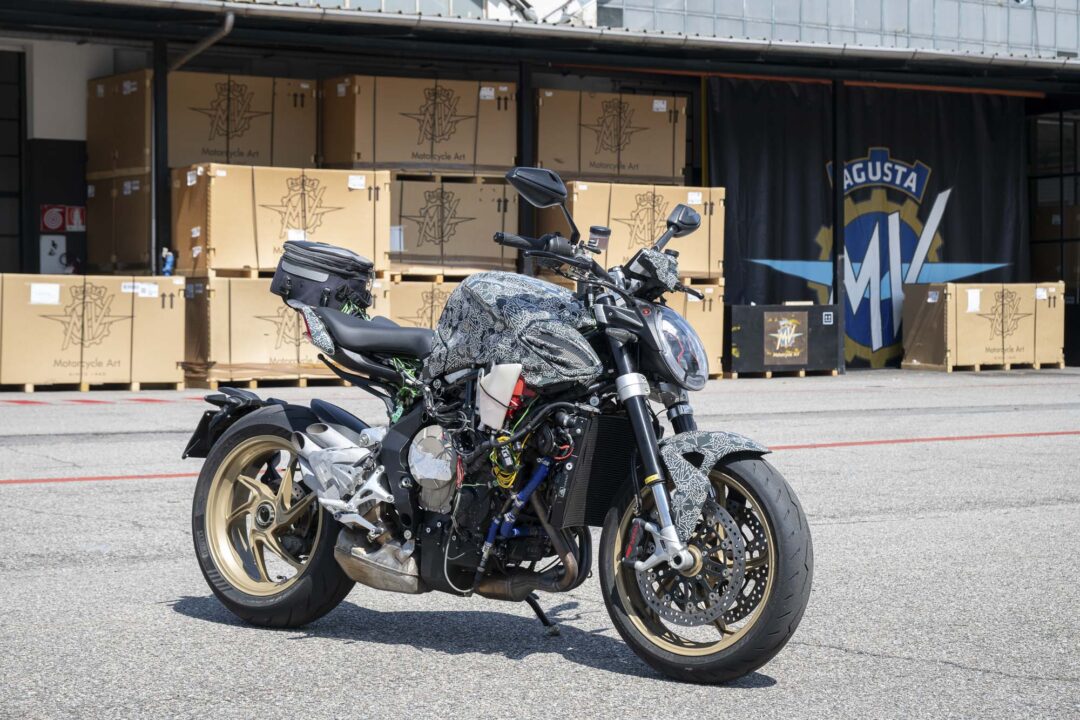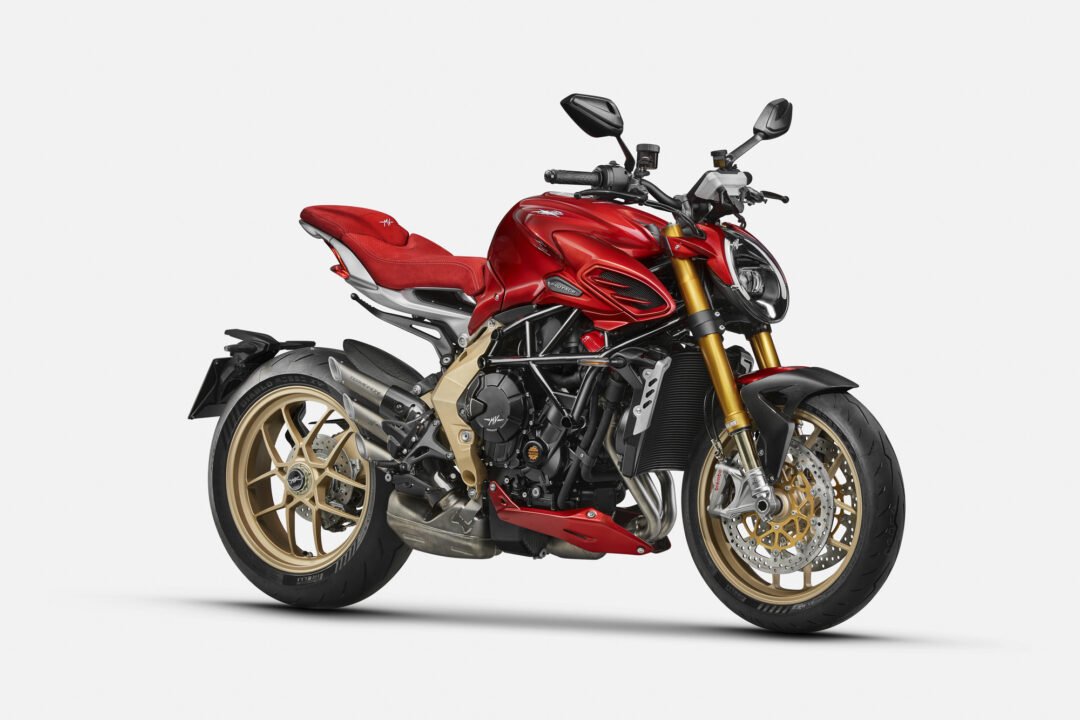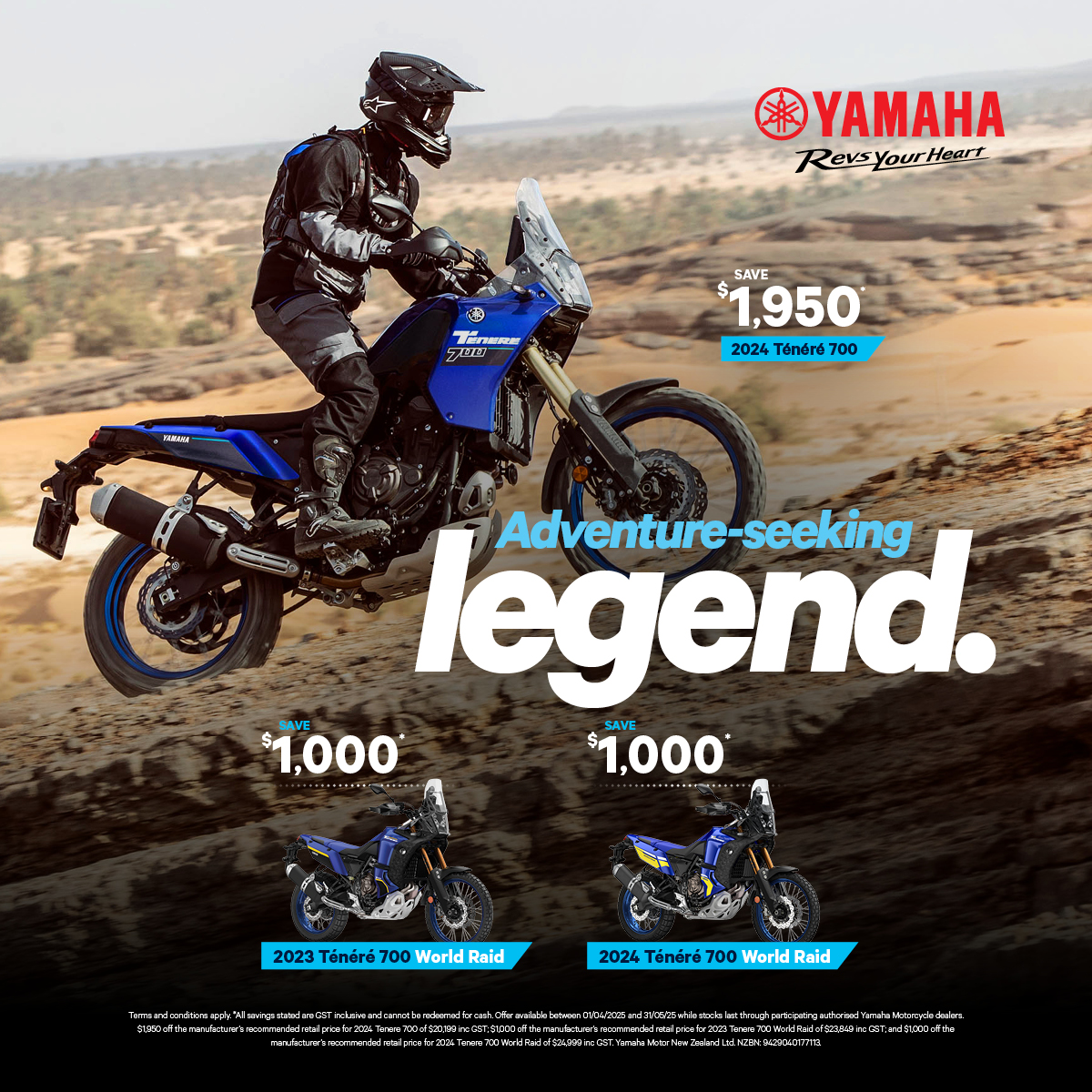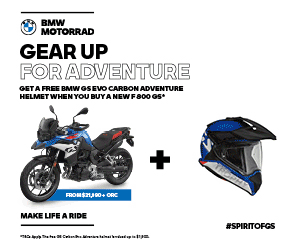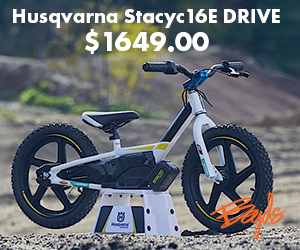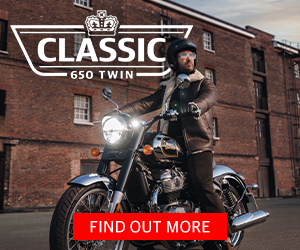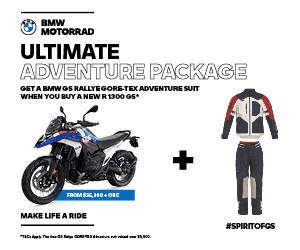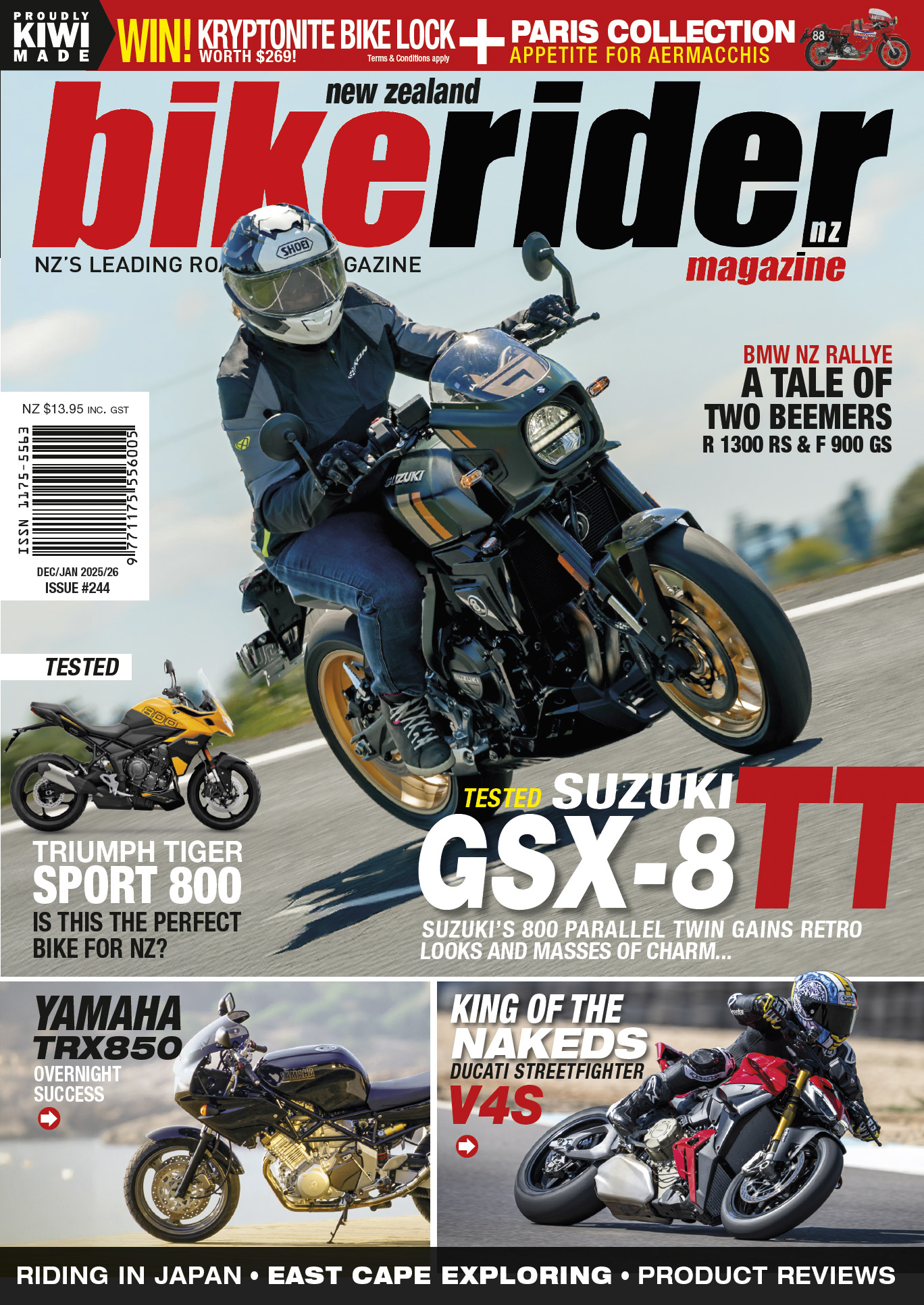- MV reborn: The 2026 Brutale Serie Oro marks MV Agusta’s first all-new model since regaining independence from KTM/Pierer Mobility — powered by a heavily revised 931 cc triple from the Enduro Veloce.
- Exclusive and evolutionary: Only 300 units of the Serie Oro will be built, celebrating 25 years of Brutale heritage and introducing a roomier, more road-friendly riding position.
- Prototype tested: Early rides of pre-production bikes reveal a torquier, more refined motor, improved chassis balance, and easier ergonomics — signalling a true next-generation Brutale built for real-world riders, not just collectors.
MV Agusta celebrates 25 years of the Brutale name with the 2026 Brutale Serie Oro — the first new model from the reborn independent factory. Powered by a reworked 931 cc triple and limited to 300 units worldwide, the Serie Oro blends Italian flair, real-world refinement, and race-bred soul. Alan Cathcart got to ride the new model before its official unveiling at the 2025 EICMA show and gives us a glimpse into what we can expect from the new MV Agusta.

“Mind-blowing.” That’s the phrase MV Agusta’s marketing team is keen for you to use after seeing — and especially riding — its first new model as a reborn, independent manufacturer: the 2026 Brutale Serie Oro.
This bike marks a fresh start for the Italian brand after separating from KTM/Pierer Mobility in 2024, powered by a heavily reworked version of the 931 cc triple first seen in the Enduro Veloce. Only 300 examples of this limited-edition Serie Oro will be built, with production set to begin next spring. A standard production version will follow soon after, and MV promises it’ll be priced more competitively than ever before.
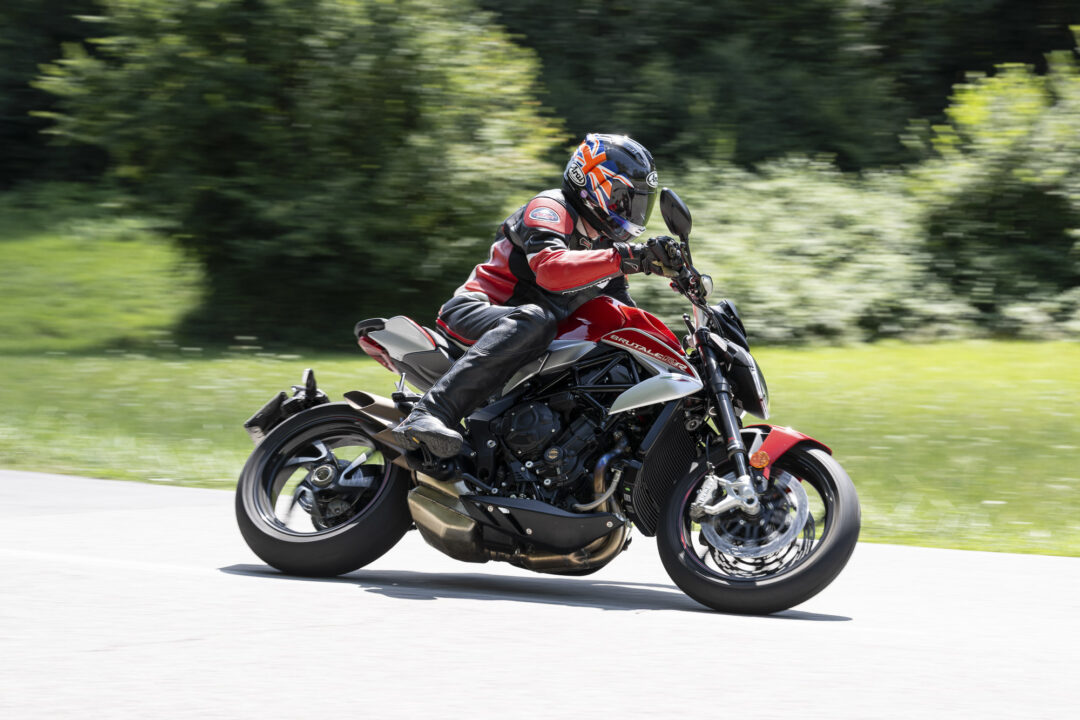
Coincidentally or not, the new bike is also MV’s way of recording a significant birthday for the Brutale model that’s become synonymous with the brand. For it’s exactly a quarter of a century since design legend Massimo Tamburini’s unique take on the Naked Sports sector (which his pupil Miguel Galluzzi had created in 1992 by concocting the Ducati Monster) was unveiled to mass acclaim in limited edition 300-off Serie Oro 750cc four-cylinder guise at the September 2000 Intermot Show in Munich. The exact quantity of Brutales made since then isn’t recorded officially – but company insiders say the combined total of all the different variants in terms of capacity and styling is well over 40,000 bikes. That makes its latest version worth paying attention to – because once again MV has reinvented one of its core models, and made the best better still.
I can make that judgement after being invited to MV’s Varese factory ahead of three other journalists for an exclusive look at and first ride on the new bike in pre-production prototype form. After being the first person outside the company to ride the Brutale 750 Serie Oro in March 2001, a couple of months before production began that spring, it was a nice way to square the circle 25 years on!
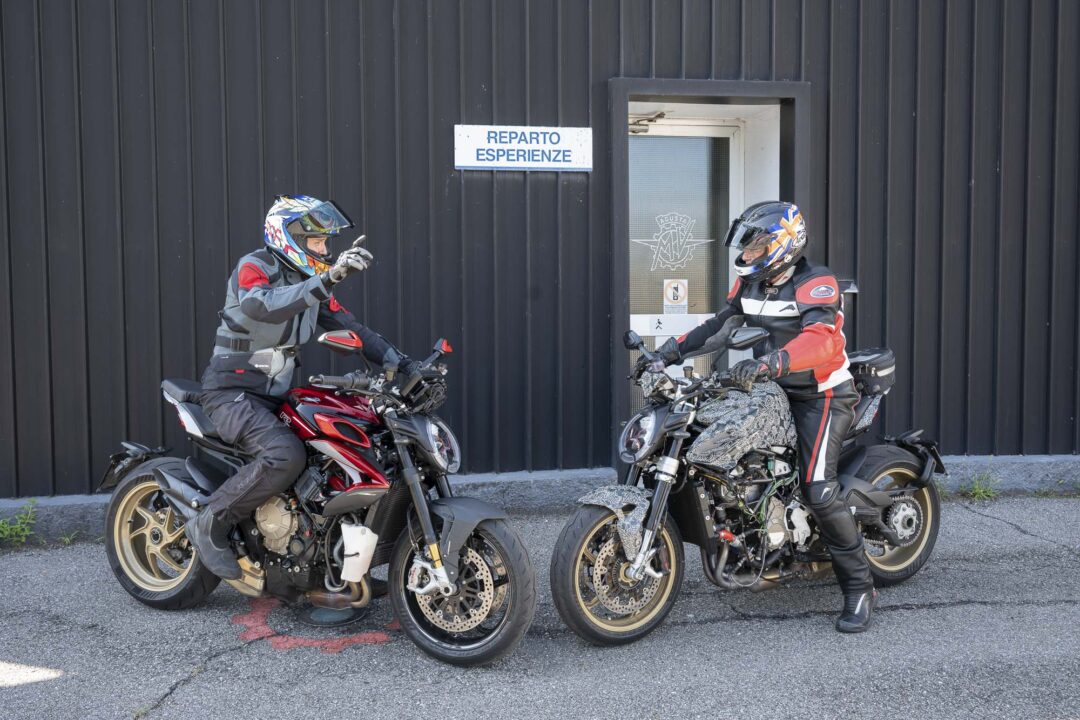
I had company along the way, though, with Federico Macario, MV Agusta’s Head of Business Development, and essentially the company’s Project Leader overseeing the Brutale project, riding alongside me all day as we headed out towards the Swiss frontier north of the MV factory, then into the fabulous foothills of the Italian Alps for some serious corner-carving aboard the two different bikes I was being given privileged access to. Prototype P0 was the seemingly innocuous-looking device wearing well-used current Brutale RR bodywork, which in fact disguised the prototype 950 version’s chassis and running gear, but was powered by an unmodified Enduro Veloce motor. Prototype P2 was a stage further along the development trail, hence its camouflage paint scheme adorning the 950 Brutale chassis and bodywork, fitted with the latest iteration of the revamped engine. Festooned with diagnostic equipment and assorted wiring, it stood out a mile away as Something Secret, despite which I only saw one bloke pull out his smartphone and take a snap of me during the couple of hours I rode the bike in something very definitely approaching anger, following MV tester Mario through his favourite stretch of Racer Road, with Federico Macario doing a good job of keeping up – well, mostly!
First, though, I started out riding a 2025 Brutale 800RR for an hour to give me some reference points for comparison with the two prototypes, during which I was reminded what a sweet sounding engine MV’s current midsize triple is, a fact I was constantly reminded of by the fact that I had to work the gearbox pretty hard to keep the motor on the boil above 7,000 rpm, in pursuit of maintaining momentum through the twists and turns of the fabulous mountain roads Mario led me along. The tucked-in riding position was surprisingly stretched out for my 178cm stature, though I enjoyed having to work pretty hard in getting the bike to flick from side to side in a series of third gear bends. But it very definitely felt like a Supersport racer on which the bodywork had been deleted – and none the worse for that, just that it was all a bit breathless: you felt committed to ride hard on it.
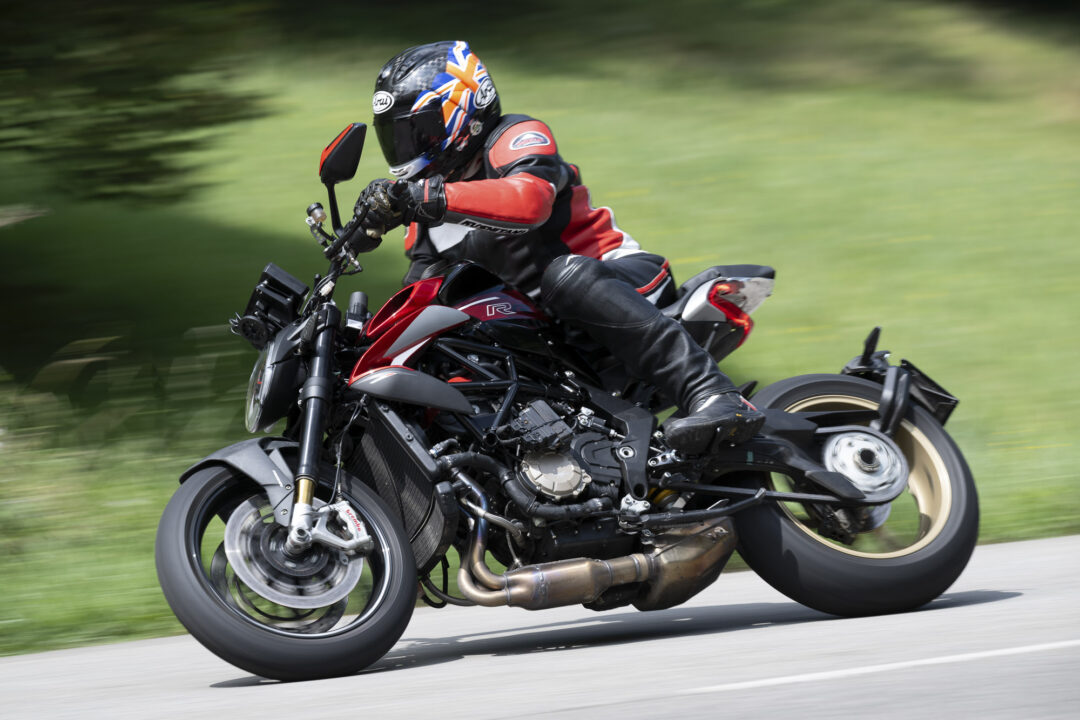
I then switched to Prototype P0, which immediately felt more spacious in terms of the riding position, which didn’t feel as close-coupled and relatively cramped as the RR’s stance had. The suspension settings were softer and more compliant, too. The engine immediately felt punchier and more torquey, as well – and this was ‘only’ the Enduro Veloce version, remember. But in retracing my path along which I’d ridden the 800RR I could consistently use one gear higher in turns – fourth instead of third, third instead of second, thanks to the gruntier engine, and I also found myself cutting down on gear-changing, too, thanks to the meatier motor. OK, I was supposed to be evaluating the new chassis, I know – but the way even the detuned EV version of the 931cc motor showed the truth of the old maxim that there ain’t no substitute for cubes.
And yes, the handling was definitely improved, too, especially the way the P-Zero steered into corners on the angle – turn-in was almost intuitive and certainly more immediate, but without sacrificing stability, even when trail-braking into the apex as I quickly found myself doing. Despite the longer wheelbase [see Technical story] which presumably helped promote that stability, it didn’t heavy up the steering, and the way the bike seemed to find its own way from side to side in those fast, sweeping turns was very impressive – it was notably less demanding in terms of rider input than the smaller-engined bike had been.

But then it was the turn of P2, and I was able to get a good idea of what the 2026 Brutale Serie Oro – and the volume production version, too – will be like to ride next spring. Despite all the testing paraphernalia I could properly assess the revised riding position versus the 800RR, and it turned out that the wider handlebar giving more leverage had been raised 20mm and moved forward 10mm. The result is a more upright stance that doesn’t place as much weight on your arms and shoulders, and is more comfortable and less stretched out. The seat had been completely reshaped versus the smaller bike and was definitely roomier, just as was P-Zero. Apparently the rider’s seat is now 20mm wider at the front, 40mm wider across the centre and 40mm longer at the rear versus the 800RR. The footrests had been lifted 30mm higher, moved rearward 10mm, and widened in spacing, and this was responsible for the more relaxed stance I noticed at once on both bikes. I do think the footrests are too far back, though: I’d like them to be 20mm further forward to make it easier to lift your body weight from side to side for cornering. And while the 850mm high seat was nicely shaped, it needed much more padding – though that’s probably a bit cheeky to ask for on this well used prototype! I could get both feet on the ground OK at rest, so the stepover was nicely judged, and not too wide.
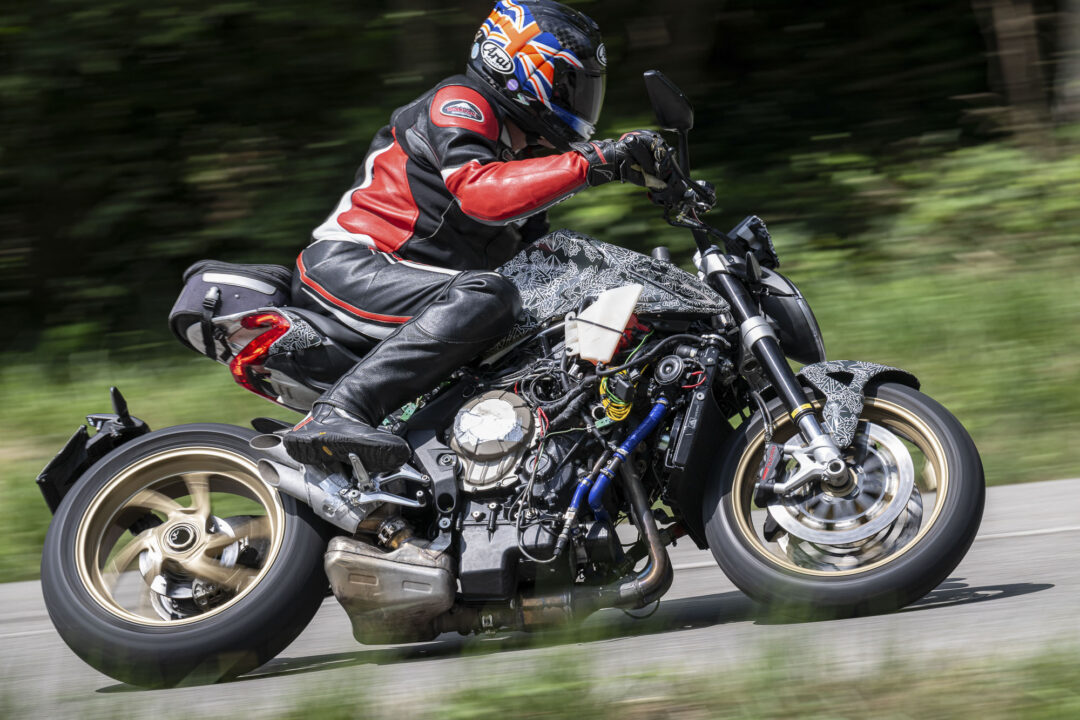
I only had a single riding mode available on the ECU, but fortunately it was the Sport version, so I could get a good idea of whether the tuned Brutale version of the 931cc motor delivered any genuine improvement in performance. It did! Let’s just say that it had a significant appetite for revs, with the three-cylinder motor spinning effortlessly up to my chosen shift point of 9,000 rpm – and sounding pretty good while doing so, too. The haunting howl of a three-cylinder motor aiming for the revlimiter was all present and correct thanks to the Termignoni exhaust, if inevitably muted – but let’s see what MV was allowed to deliver by the noise police when the final homologation took place. Acceleration is truly thrilling – it feels a bigger bike than I expected, though perhaps that was a spinoff from the more spacious riding position after the 800RR, but it gets off the mark really well. However, pickup from a closed throttle was a little brusque, and occasionally snatchy, although this seemed rpm-related, so was most noticeable at 3-4,000 revs, not so much either side of that. But you could feel the torque curve was so strong and flat, especially from 4,000-7,000 rpm where I found myself spending most of my time on the bike, that changing gear was almost optional – a pity in a way, since the two-way quickshifter was ideally mapped, just as on other Eldor-powered such devices I’ve sampled. And the sound from the exhaust as the auto-blipper does its stuff on downshifts is definitely addictive! Using the clutch in traffic was no hardship – it’s not too stiff or heavy a pull on the lever.
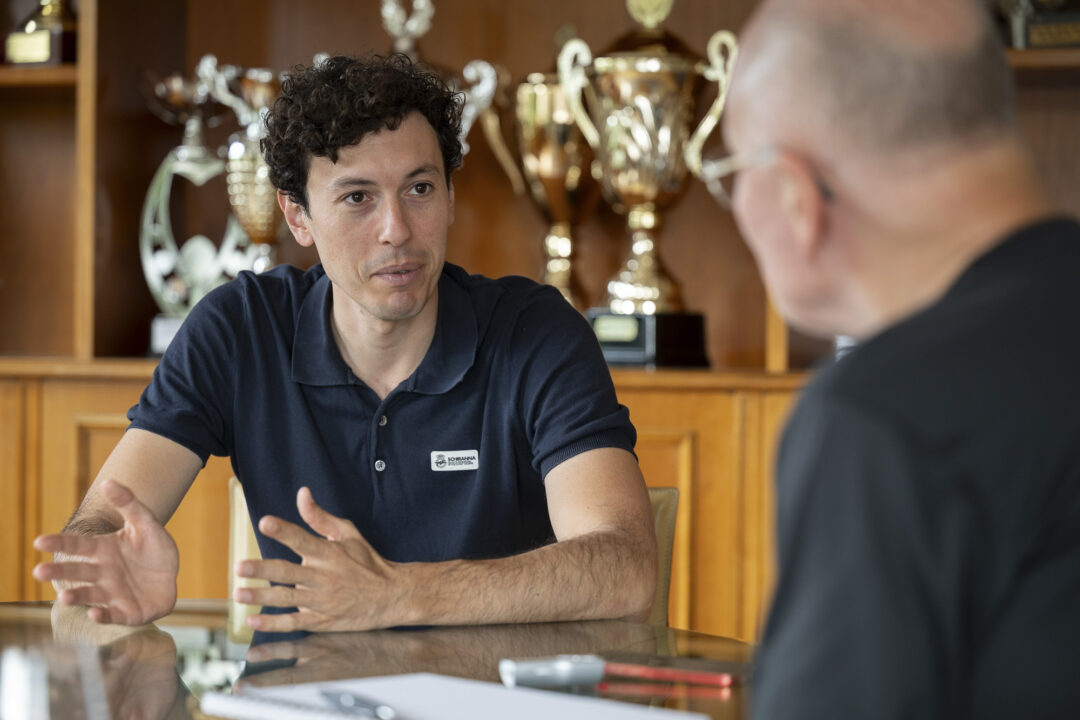
Though the Hypure Monoblock radial brakes are Brembo’s latest top of the line kit, and the Brutale is the only midsize model to yet be fitted with them, there wasn’t a sense of overkill when I used them hard in the tight, twisting turns in the mountains. But I only used the front discs as I couldn’t find the rear brake pedal! The bike I was riding was fitted with the Marzocchi suspension from the series production variant, and while I can’t say I gave this an intense workout in my time on the bike, it felt well sorted. Ride quality was good, though at the stage I rode the bike final settings for customer delivery were still under review.
What is certain is that the new Brutale will be a bike that’s accessible to a wider range of customers than anything bearing that name built up to now. Previously, each iteration of the Brutale dynasty had been directly derived from the equivalent sportbike – like the 800RR is a declothed version of the F3 Supersport racer with lights. This new model is much more accessible – more of a roadster than a sportbike, without sacrificing the inherent sporting allure of an MV Agusta. I’m looking forward to riding the finished version.
Alan Cathcart



